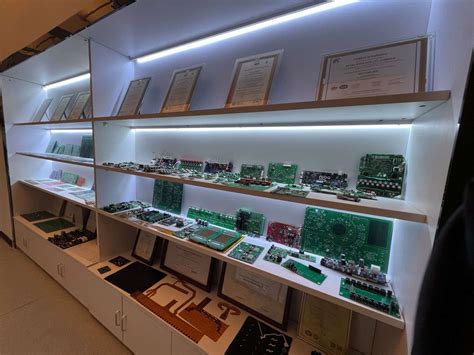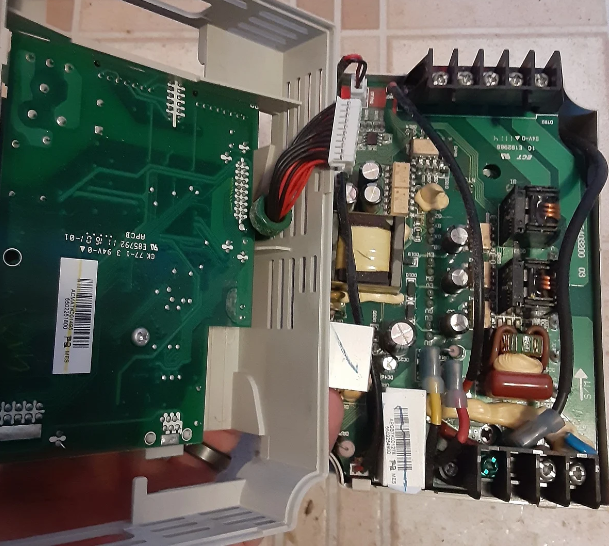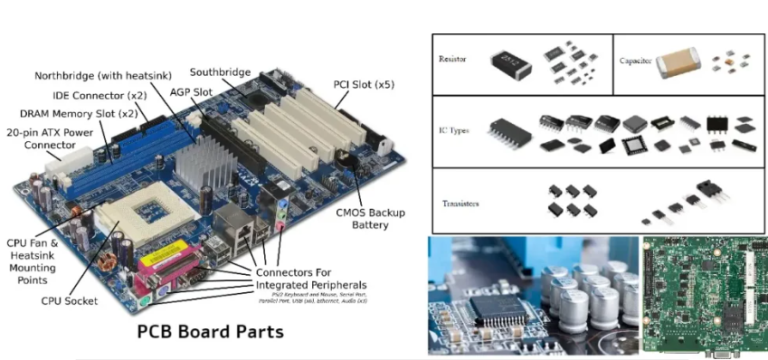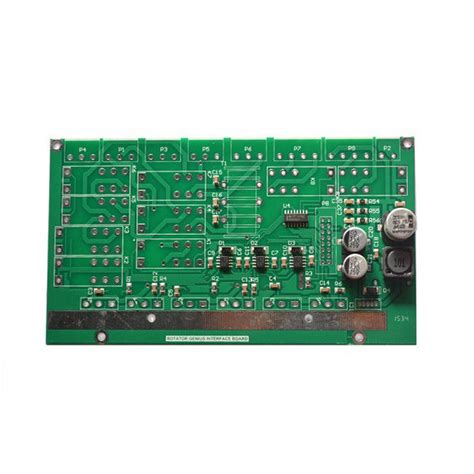How to make metal core pcb
Understanding The Basics Of Metal Core PCB Design
Metal Core Printed Circuit Boards (MCPCBs) have become increasingly popular in various industries due to their superior thermal management capabilities. Understanding the basics of metal core PCB design is essential for engineers and designers who wish to leverage these benefits in their projects. At the heart of MCPCBs is a metal substrate, typically aluminum or copper, which serves as the core material. This metal core is sandwiched between layers of dielectric material and copper circuitry, providing a path for heat dissipation away from critical components.
The design process begins with selecting the appropriate metal core material.
Aluminum is commonly used due to its excellent thermal conductivity and cost-effectiveness. However, copper, with its superior thermal and electrical properties, is chosen for applications requiring higher performance, albeit at a higher cost. The choice of metal core material significantly impacts the overall thermal performance and cost of the PCB, making it a crucial decision in the design phase.
Once the core material is selected, the next step involves designing the dielectric layer.
This layer is critical as it electrically insulates the metal core from the copper circuitry while facilitating efficient heat transfer. The dielectric material must have a high thermal conductivity and a low thermal resistance to ensure optimal performance. Common materials used include epoxy resins and ceramic-filled polymers, each offering different thermal and electrical properties. The thickness of the dielectric layer also plays a vital role in thermal management, with thinner layers generally providing better heat dissipation.
Transitioning to the layout of the copper circuitry, designers must carefully consider the placement of components and traces to optimize thermal performance.
Components that generate significant heat should be placed in close proximity to the metal core to facilitate efficient heat transfer. Additionally, the use of thermal vias, which are plated holes that connect the top copper layer to the metal core, can further enhance heat dissipation. These vias provide a direct thermal path, allowing heat to be conducted away from the surface more effectively.
Moreover, the design of the copper traces themselves is crucial.
Wider traces can carry more current and dissipate heat more effectively, reducing the risk of overheating. However, designers must balance this with the need to maintain sufficient spacing between traces to prevent electrical shorts. Advanced simulation tools can aid in optimizing trace width and spacing, ensuring that the PCB meets both thermal and electrical requirements.
As the design progresses, it is essential to consider the manufacturing process.
Metal core PCBs require specialized fabrication techniques due to the presence of the metal substrate. For instance, drilling and routing must be performed with precision to avoid damaging the metal core or dielectric layer. Additionally, the solder mask application must be carefully controlled to ensure proper adhesion and coverage, as any defects can compromise the PCB’s performance.
In conclusion, understanding the basics of metal core PCB design involves a comprehensive approach that considers material selection, dielectric layer design, component placement, and manufacturing processes. By carefully addressing each of these aspects, designers can create PCBs that offer superior thermal management, enhancing the reliability and performance of electronic devices. As industries continue to demand more efficient and compact solutions, the role of metal core PCBs is likely to expand, making it imperative for designers to master these foundational principles.
Essential Materials And Tools For Metal Core PCB Fabrication
Metal core printed circuit boards (PCBs) are increasingly popular in applications requiring efficient heat dissipation, such as LED lighting and power electronics. Fabricating these PCBs involves a unique set of materials and tools, distinct from those used in traditional PCB manufacturing. Understanding the essential materials and tools required for metal core PCB fabrication is crucial for achieving optimal performance and reliability.
To begin with, the primary material in metal core PCBs is the metal substrate, typically aluminum or copper.
Aluminum is favored for its excellent thermal conductivity and cost-effectiveness, making it suitable for most applications. Copper, on the other hand, offers superior thermal performance but at a higher cost. The choice between these metals depends on the specific thermal management needs and budget constraints of the project.
In addition to the metal substrate, a dielectric layer is essential.
This layer electrically insulates the metal core from the copper circuitry while facilitating heat transfer. The dielectric material must possess high thermal conductivity and electrical insulation properties. Commonly used dielectric materials include epoxy resins and ceramic-filled polymers, which provide a balance between thermal performance and mechanical stability.
Moving on to the copper layer, it forms the conductive pathways for electrical signals.
The thickness of the copper layer is a critical consideration, as it affects both the current-carrying capacity and the thermal performance of the PCB. Standard copper thicknesses range from 1 oz/ft² to 3 oz/ft², with thicker layers used for high-power applications.
The fabrication process also requires a range of tools and equipment.
A CNC milling machine is indispensable for precisely cutting and shaping the metal core to the desired dimensions. This machine ensures that the metal substrate is accurately prepared for subsequent processing steps. Additionally, a laminating press is necessary to bond the dielectric layer to the metal core, ensuring a uniform and reliable adhesion.
For the etching process, which defines the copper circuitry, a chemical etching system is employed.
This system uses an etchant solution to remove unwanted copper, leaving behind the desired circuit pattern. It is crucial to control the etching parameters, such as temperature and concentration, to achieve precise and consistent results.
Furthermore, drilling equipment is required to create vias and mounting holes in the PCB.
These holes facilitate electrical connections between different layers and provide mechanical support for components. High-speed drilling machines equipped with carbide drill bits are typically used to achieve clean and accurate holes.
Finally, a solder mask application is necessary to protect the copper circuitry from oxidation and prevent solder bridges during component assembly. The solder mask is typically applied using a screen-printing process, followed by curing under UV light or heat.
In conclusion, the fabrication of metal core PCBs involves a careful selection of materials and tools to ensure optimal thermal management and electrical performance. By understanding the properties and functions of each material, as well as the role of each tool in the fabrication process, manufacturers can produce high-quality metal core PCBs that meet the demanding requirements of modern electronic applications. This comprehensive approach not only enhances the reliability of the final product but also contributes to the overall efficiency and effectiveness of the manufacturing process.

Step-By-Step Guide To Manufacturing Metal Core PCBs
Manufacturing metal core printed circuit boards (PCBs) involves a series of precise steps that require careful attention to detail and a thorough understanding of the materials and processes involved. Metal core PCBs are particularly valued for their ability to dissipate heat more effectively than traditional PCBs, making them ideal for high-power applications. To begin the manufacturing process, it is essential to select the appropriate metal core material, typically aluminum or copper, due to their excellent thermal conductivity properties. The choice of metal core depends on the specific thermal management requirements of the application.
Once the metal core material is selected, the next step involves preparing the substrate.
This involves cleaning the metal surface to ensure it is free from any contaminants that could affect the adhesion of subsequent layers. A clean surface is crucial for the successful lamination of the dielectric layer, which serves as an insulating barrier between the metal core and the conductive copper layer. The dielectric material is typically a thermally conductive but electrically insulating polymer, which is laminated onto the metal core using heat and pressure.
Following the lamination of the dielectric layer, the next phase is the application of the copper foil.
This copper layer is essential for forming the circuit traces that will carry electrical signals across the PCB. The copper foil is laminated onto the dielectric layer, and this process must be executed with precision to ensure uniform adhesion and to prevent any air bubbles or voids that could compromise the integrity of the circuit.
With the copper layer in place, the next step is to transfer the circuit design onto the PCB.
This is achieved through a process known as photolithography. A photosensitive resist is applied to the copper surface, and the circuit pattern is then exposed onto the resist using ultraviolet light. The exposed areas of the resist are then developed, revealing the underlying copper that will form the circuit traces. The unexposed resist is removed, leaving a precise pattern of copper traces.
Subsequently, the PCB undergoes an etching process to remove the unwanted copper, leaving only the desired circuit pattern.
This is typically done using a chemical etchant that dissolves the excess copper. After etching, the remaining photoresist is stripped away, revealing the completed circuit pattern on the copper layer.
The next step involves drilling holes for vias and mounting components.
These holes are precisely drilled using computer-controlled machinery to ensure accuracy. Once drilled, the holes are plated with copper to establish electrical connections between different layers of the PCB.
Finally, the PCB undergoes a series of finishing processes, including solder mask application and surface finish.
The solder mask is applied to protect the copper traces from oxidation and to prevent solder bridges during component assembly. The surface finish, such as HASL (Hot Air Solder Leveling) or ENIG (Electroless Nickel Immersion Gold), is applied to enhance solderability and protect the exposed copper pads.
In conclusion, manufacturing metal core PCBs is a complex process that requires meticulous attention to detail at each stage. From selecting the appropriate materials to executing precise fabrication techniques, each step is crucial to ensuring the final product meets the desired thermal and electrical performance standards. By following these steps, manufacturers can produce high-quality metal core PCBs that are well-suited for demanding applications.

Common Challenges And Solutions In Metal Core PCB Production
In the realm of electronics manufacturing, metal core printed circuit boards (MCPCBs) have emerged as a pivotal component, particularly in applications requiring efficient heat dissipation. However, the production of MCPCBs is not without its challenges. Understanding these common obstacles and their solutions is crucial for manufacturers aiming to optimize their production processes and ensure high-quality outcomes.
One of the primary challenges in MCPCB production is the selection of appropriate materials.
Unlike traditional PCBs, which typically use fiberglass as a substrate, MCPCBs incorporate a metal core, often aluminum or copper, to enhance thermal conductivity. The choice of metal is critical, as it directly impacts the board’s thermal performance and mechanical stability. To address this, manufacturers must carefully evaluate the thermal requirements of the application and select a metal that offers the best balance between thermal conductivity and cost-effectiveness.
Another significant challenge is the drilling process.
The presence of a metal core complicates drilling operations, as standard PCB drilling techniques may not suffice. The metal layer can cause excessive wear on drill bits, leading to increased production costs and potential delays. To mitigate this issue, manufacturers can employ specialized drill bits designed for metal substrates, which are more durable and capable of maintaining precision. Additionally, optimizing drilling parameters, such as speed and feed rate, can further enhance efficiency and reduce tool wear.
Thermal management is also a critical concern in MCPCB production.
The primary advantage of MCPCBs is their ability to dissipate heat effectively, but this requires careful design and manufacturing processes. One common issue is the delamination of layers due to thermal stress. To prevent this, manufacturers should ensure that the bonding process between the metal core and the dielectric layer is robust. This can be achieved by using high-quality bonding materials and employing precise lamination techniques to ensure uniform adhesion.
Furthermore, the etching process presents unique challenges in MCPCB production.
The metal core can interfere with standard etching techniques, leading to uneven or incomplete etching. To overcome this, manufacturers can utilize advanced etching solutions specifically formulated for metal substrates. These solutions can provide more consistent results and help maintain the integrity of the circuit patterns.
In addition to these technical challenges, manufacturers must also consider the environmental impact of MCPCB production.
The use of metals and chemicals in the manufacturing process can pose environmental risks if not managed properly. Implementing sustainable practices, such as recycling metal waste and using eco-friendly chemicals, can help mitigate these risks and align production processes with environmental regulations.
Finally, quality control is paramount in ensuring the reliability and performance of MCPCBs. Given the complexity of their production, MCPCBs are susceptible to defects that can compromise their functionality. Implementing rigorous testing protocols, such as thermal cycling and electrical testing, can help identify potential issues early in the production process. By addressing these challenges with targeted solutions, manufacturers can enhance the quality and efficiency of their MCPCB production, ultimately delivering superior products to meet the demands of modern electronic applications.







